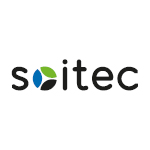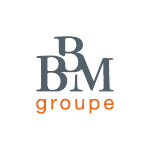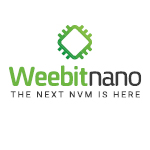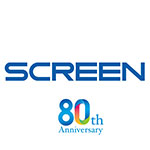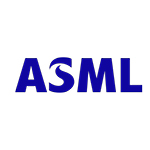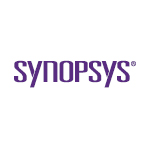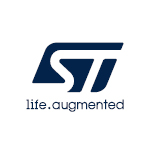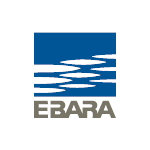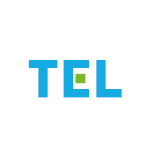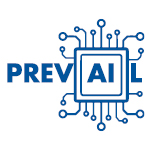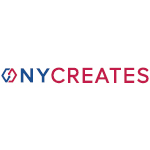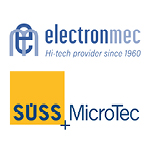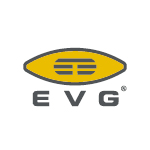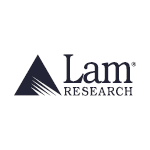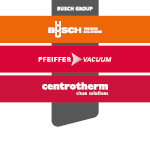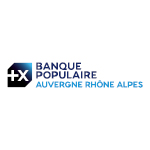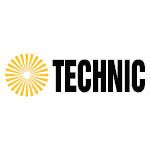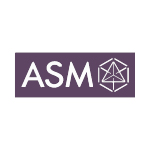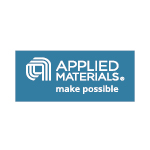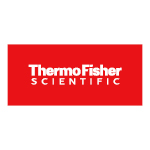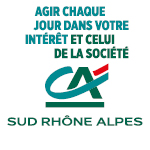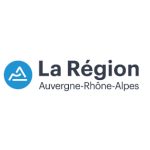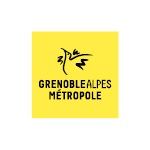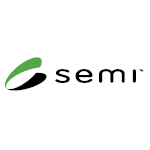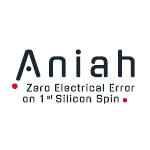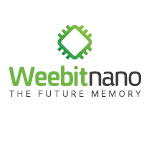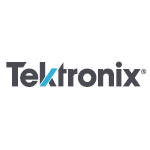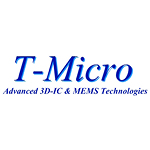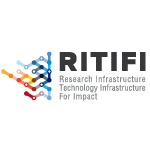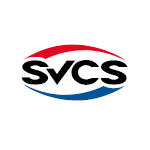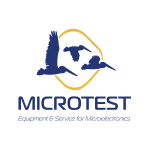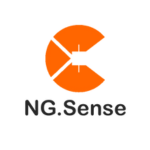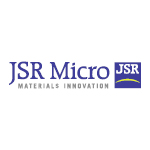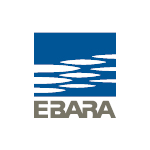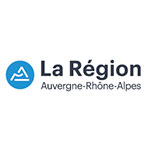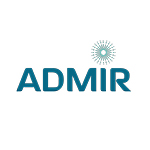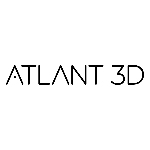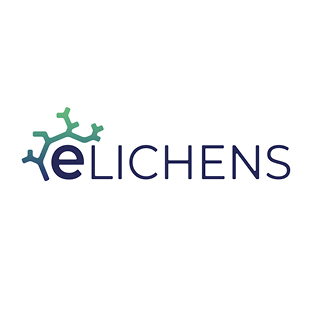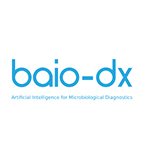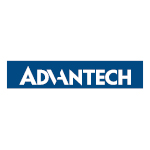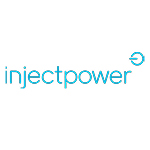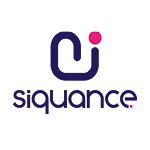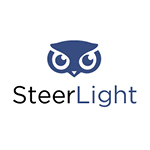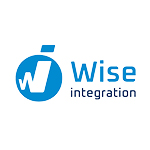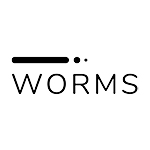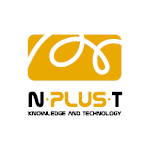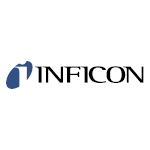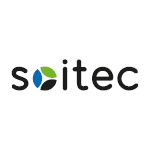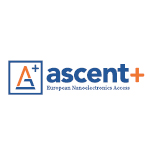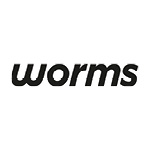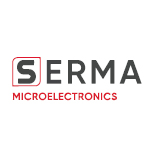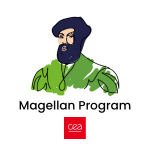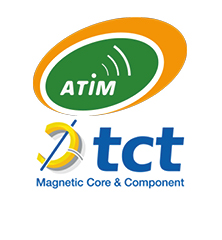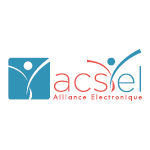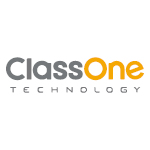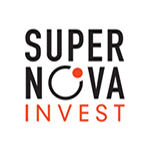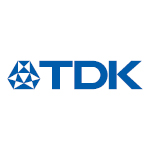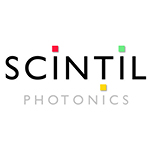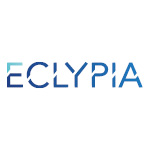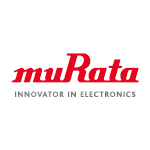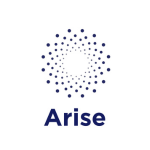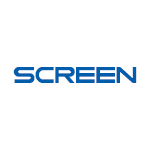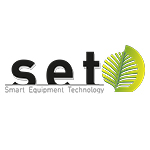June 17-19, 2025 | Grenoble, France
Leti Innovation Days
Innovate, integrate, elevate:
your lab-to-fab fast track
ABOUT THE EVENT
Why you should
attend
The world needs lower-power, more resource-efficient electronics for an array of use cases, and the semiconductor industry is understandably excited about the recent surge in investments. This
is good news for the industry—and it will create unprecedented opportunities.
In this new landscape, partnerships will be instrumental to getting relevant, robust, and reliable products to your markets faster. At CEA-Leti, our mission has always been to help you put innovative technologies into production in your fabs.
Leti Innovation Days 2025 will offer you a front-row seat to our most recent advances. Join more than 1,000 semiconductor industry professionals at this three-day global event and come away equipped and inspired to innovate!
High-level speakers
Semiconductor industry executives will share their unique insights into today’s challenges and their take on where the industry is headed at our not-to-be-missed plenary session. You will come away inspired to seize upon the new opportunities just over the horizon.Business meetings
With dozens of semiconductor companies from around the world represented, Leti Innovation Days is where CEOs and CTOs come to meet. Targeted business meetings are the ideal way to find your next technology partner or provider.The latest technologies
Six satellite conferences will give you the knowledge you need to make smart technology choices today. The exhibition will showcase some of the most advanced solutions of the moment. Could your next product innovation be among them?
Networking
With coffee breaks, lunches, and evening receptions there will be ample time to connect informally with like-minded semiconductor industry professionals. Space is limited, so don’t wait to register for these exclusive opportunities to expand your network.represented
& exhibitors
Top Keynote Speakers
Laith Altimime
President, Semi Europe

Laith Altimime
President, Semi Europe
As President of SEMI Europe, Laith Altimime leads SEMI’s activities in Europe and Middle East and Africa (EMEA). Altimime has P&L responsibility as well as ownership of all Europe region programs and events, including SEMICON Europa.
He is responsible for establishing industry Standards, advocacy, community development, expositions, and programs. He provides support and services to SEMI members worldwide that have supply chain interests in Europe. He manages and nurtures relationships with SEMI members in the region and globally as well as with local association and constituents in industry, government, and academia.
Altimime has over 35 years of international experience in the semiconductor industry. Prior to joining SEMI in 2015, He held senior leadership positions at NEC, KLA-Tencor, Infineon, Altis, Qimonda and imec.
Abstract:
Global industry growth mega trends, headwinds and opportunities for global Private-Public collaborations.
Stefan Finkbeiner
CEO and GM, Bosch Sensortec GmbH
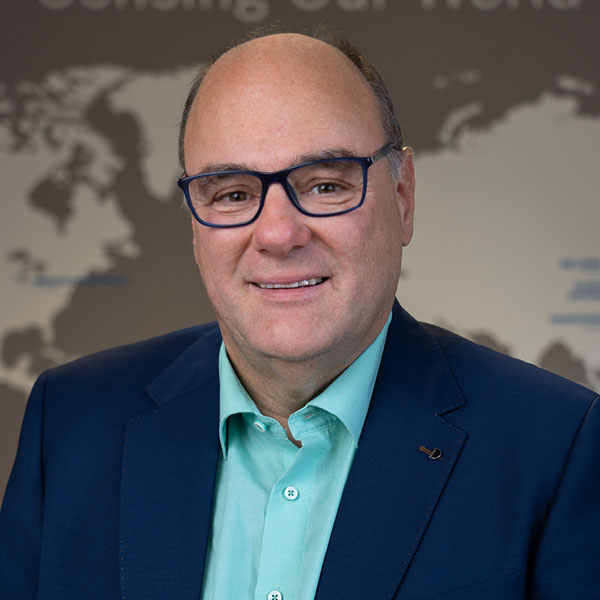
Stefan Finkbeiner
CEO and GM, Bosch Sensortec GmbH
Bio:
Stefan Finkbeiner received his Diploma in Physics from University of Karlsruhe in 1992. He then joined Max-Planck-Institut in Stuttgart and there received his PhD in Physics in 1995.
He joined Robert Bosch GmbH in 1995 and has been working in different positions related to the research, development, manufacturing, and marketing of sensors for more than 20 years. Senior positions at Bosch have included Director of Marketing for sensors, Director of Corporate Research in microsystems technology, and Vice President of Engineering for sensors.
In 2015, Dr. Finkbeiner was awarded with the prestigious lifetime achievement award from the MEMS & Sensors Industry Group.
Abstract:
Tiny sensors are catalysts for addressing major modern challenges: Enhancing air quality and elevating human well-being. Clean air is vital for well-being. Innovative MEMS technology measures health-damaging pollutants in the air and can help improve air quality. To further enhance well-being, MEMS sensors can track full-body motion, coupled with AI-driven personalization, providing real-time qualitative and quantitative feedback to users.
These examples underscore the synergy between MEMS sensors and smart algorithms, unlocking vast potential across diverse fields. This presentation emphasizes the transformative power of MEMS sensors, envisioning a world where technology not only enhances devices but also transforms lives. The presentation concludes with an outlook on innovative use cases ahead.
Theodore Sizer
EVP, Optical Research, Nokia Bell Labs
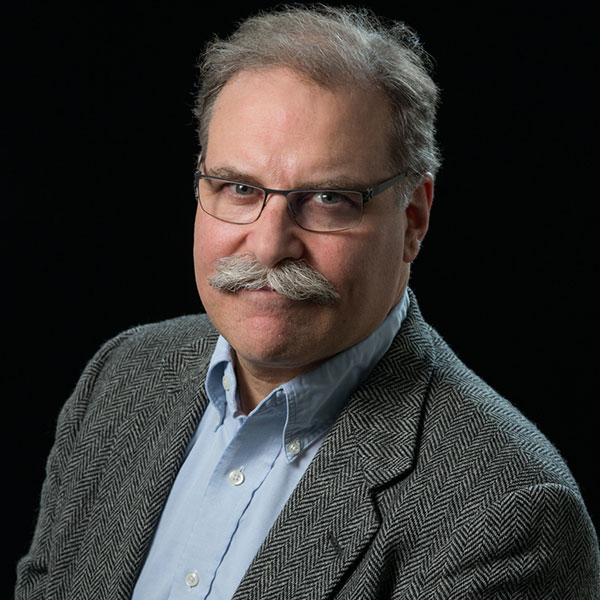
Theodore Sizer
EVP, Optical Research, Nokia Bell Labs
Bio :
Dr. Theodore (Tod) Sizer leads the Optical System and Device Research Lab in Nokia Bell Labs, leading teams innovating in all aspects of optical systems and devices for access, core, submarine, satellite, and data center communications. Prior to his current role, Tod lead Wireless Research in Nokia Bell Labs for eight years driving the vision and research of 5G. Tod graduated from Amherst College, and received his Masters and Doctorate in Optics from the Institute of Optics at the University of Rochester. In 2012 he received the Popular Science Breakthrough Innovation award for the lightRadio invention. Tod is a Fellow of Bell Labs, WWRF, and IEEE. He is the author of 55 US patents and a member of the IEEE and Optica.
Abstract :
Outside of the first 100m which might be carried over WiFi or 5G, nearly all communications are over optical fiber whether it is subsea, terrestrial, fiber to the home, or in the data center. This reality, however, is facing significant challenges due to fundamental limits we have reached in fiber communications. Managing the continued massive growth in communication requires new innovation to overcome the limits with new architectures, systems, and devices. For the optoelectronic semiconductor industry the challenge is to increase speed and parallelism in our devices while reducing the cost and energy per bit carried. In this talk we will share more on the challenge as well as the ways we are addressing in inside Nokia Bell Labs, particularly with research at the III-V Lab joint venture celebrating its 20th anniversary this year.
Fabio Gualandris
President Quality, Manufacturing & Technology, STMicroelectronics
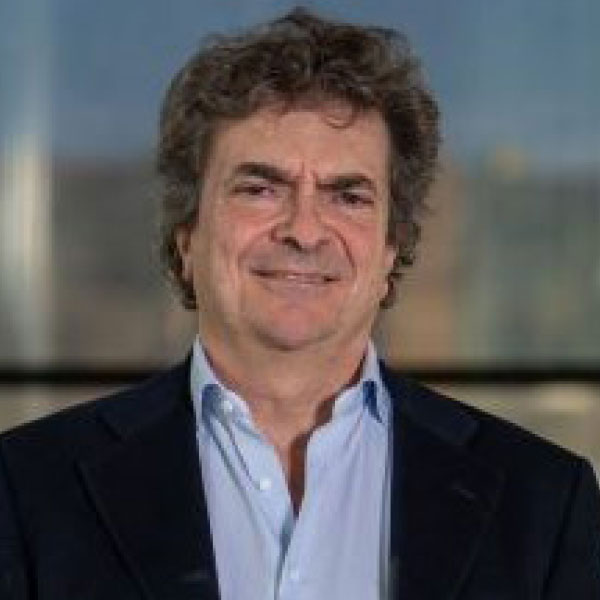
Fabio Gualandris
President Quality, Manufacturing & Technology, STMicroelectronics
Bio :
Fabio is STMicroelectronics’ President, Quality, Manufacturing, and Technology and has held this position since July 2023. He was responsible for the company’s Back-End Manufacturing & Technology organization since 2016 and also led the Company’s Testing Council, alongside its manufacturing strategy in Asia and efforts in System-in-Package technology. Fabio is a member of ST’s Executive Committee.
Fabio joined SGS Microelettronica (now ST) R&D in 1984. He became R&D Director of Operations in 1989 and became Automotive BU Director in 1996. After two years as President and CEO of Semitool, he rejoined ST in 2000 as Group VP responsible for memory products including the RAM/PSRAM and Automotive Flash. In 2005, Fabio was appointed CEO of ST Incard, an ST smart-card subsidiary. In 2008-2010, he served as VP and Supply Chain General Manager at ST’s memory JV with Intel. In 2011, Fabio was appointed ST’s Executive Vice President, Product Quality Excellence.
Fabio has authored several technical and managerial papers and holds multiple international patents. He serves as Chairman of STS, ST's manufacturing JV in China. Fabio was born in Bergamo, Italy, in 1959. He is a Doctor in Physics from the University of Milan.
Abstract :
Since its inception in 1958, semiconductor technology has undergone rapid growth and innovation, positioning itself as one of the most dynamic segments in technological advancement. Following Moore's Law on technology evolution, and then transitioning to "More than Moore" approaches, the technology has progressed towards SoC and SiP architectures, ultimately leading to heterogeneous integration and chiplet technologies. New materials such as SiC and GaN have also been introduced, complementing Silicon, which still remains indisputably the main actor.Alongside these materials, new manufacturing techniques including SOI, W2W bonding, PLP, Fan-In-Fan-Out, DCI, PCM, FD-SOI, and II-VI quantum dots have emerged. The advancement of semiconductor technology moved hand in hand with increasing in volumes, data processing capabilities, and automation, paving the way for Edge AI applications that leverage deep learning and ML algos.
To sustain complexity and innovation, we implement edge-to-edge technology governance with integrated planning, data-driven decisions, and multidimensional organizational structures. Specific examples will clarify these concepts.
Sanjay Natarajan
SVP & GM, Components Research, Intel
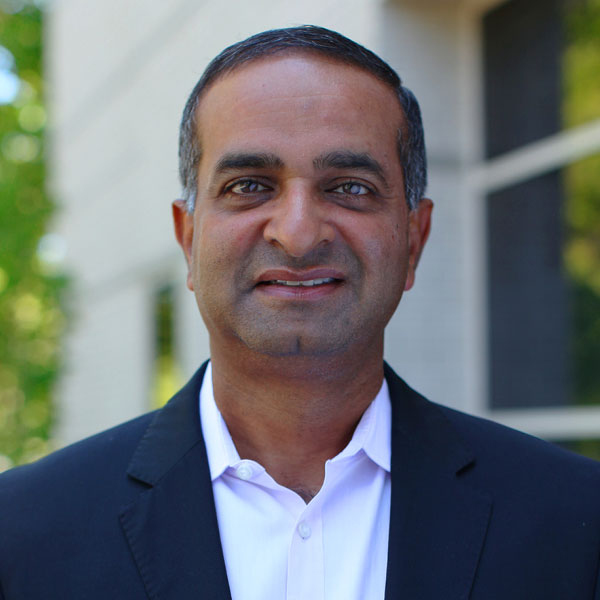
Sanjay Natarajan
SVP & GM, Components Research, Intel
Bio :
Sanjay Natarajan is a Senior Vice President and General Manager of Intel Foundry Technology Research & External R&D Engagements group at Intel Corporation. He is responsible for Intel's internal semiconductor research, external engagements with Universities and Consortia, and government engagements worldwide related to semiconductor R&D. During his 31-year career in the semiconductor R&D industry, Sanjay led the development of Intel's 14nm process technology, and prior to that, he led development of Intel's industry-leading 32nm process technology. In addition to Intel, Sanjay has held senior executive positions at Applied Materials, where he led a group developing new types of semiconductor equipment focused on extending Moore’s Law. Outside of work, Sanjay is a Research Professor in the Department of Mechanical & Materials Engineering at Portland State University. He also serves on the Advisory Boards to the Deans of Engineering at Portland State University and Carnegie Mellon University and serves on the Advisory Council for the National Science Foundation Engineering Directorate. He is an IEEE member and received his BS, MS, PhD in Electrical Engineering from Carnegie Mellon University.
Abstract :
For nearly 60 years, Moore’s Law has exponentially increased our ability to compute and has transformed the way we live. Today we live in a world in which nearly every aspect of our lives is touched by technology, including technology itself - which now finds itself in a virtuous cycle of increasing demand driven by increasing capability.
As graphics and AI applications create new and taxing compute workloads, storage needs and power-hungry data transfer rates, advancing Moore’s Law has become more relevant than ever.
Continued dimensional scaling, additional new materials, novel architectures and disruptive innovation at all levels of the compute system drive Intel’s research on the fundamentals of semiconductor technology in our relentless pursuit of Moore’s Law.
Laura Matz
CSTO, Merck
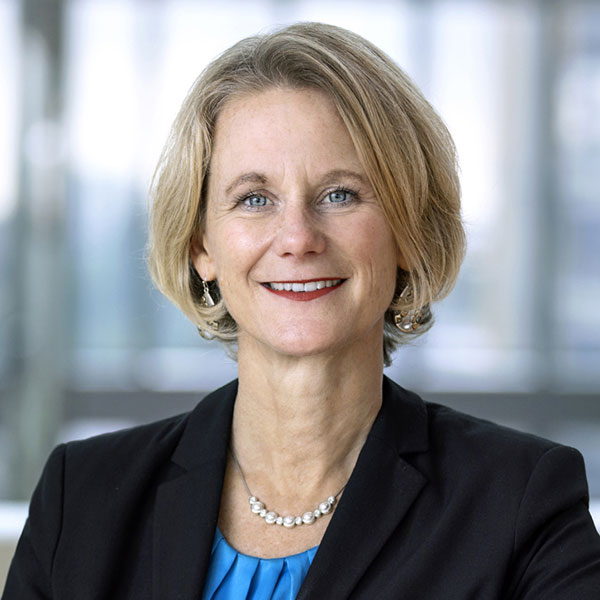
Laura Matz
CSTO, Merck
Bio :
Dr. Laura Matz serves as the Chief Science and Technology Officer at Merck KGaA Darmstadt, Germany, a role that entails spearheading the innovation agenda of a distinguished science and technology enterprise with a heritage exceeding 350 years in chemistry, biotechnology, and integrated materials solutions.
In her capacity, Laura collaborates closely with the Company Board and partners with Innovation Heads across Merck KGaA's three leading industry verticals: Life Science, Healthcare, and Electronics. Her visionary leadership is instrumental in shaping the future of the enterprise, leveraging digital and AI/ML technologies to drive innovation, exploring new markets, fostering strategic partnerships, and developing cutting-edge capabilities and digital business models to deliver groundbreaking solutions. A recent notable achievement includes her role as CEO in launching Athinia™, a joint venture with Palantir, which introduced a pioneering data collaboration platform for the semiconductor ecosystem.
Prior to assuming the role of CSTO, Laura held the position of Senior Vice President within EMD Electronics, previously Versum Materials and Air Products Electronics division. With over 20 years of experience in semiconductor manufacturing and a decade dedicated to running semiconductor materials businesses, she has been a driving force in advancing semiconductor materials development, emphasizing robust R&D initiatives to fuel business growth.
Laura is well-recognized for her leadership style, fostering diverse teams to innovate and solve complex challenges facing humanity. She advocates for the empowerment of young talent in science and engineering, recognizing their potential to drive meaningful change.
Beyond her role at Merck KGaA, Laura serves on the Board of Directors of transformative organizations. She is a board member of AIChE (American Institute of Chemical Engineers), championing a mission to inspire a safe, connected, and inclusive community of chemical engineering professionals worldwide. She contributes on the Board of SEMI Impact for Skills, a governance program focused on upskilling and reskilling initiatives, talent attraction, and accessing funding opportunities. Laura also serves as Director on the board of AION Labs, a Venture Studio pioneering a novel AI-based paradigm to drug innovation.
With her extensive industry experience, Laura is well regarded as a thought leader at the intersection of science, technology, innovation, and business.
Abstract :
Merck, a leading global Science and Technology company, operates across life science, healthcare, and electronics. With over 350 years ability in chemistry, biotechnology, and integrated materials solutions, Merck is at the forefront of leveraging data and digital technologies to drive innovation. By actively exploring new markets and developing its digital business models, Merck is leveraging its capabilities to deliver groundbreaking solutions to customers and patients.
In this presentation, Laura Matz, Merck's Chief Science and Technology Officer, will discuss the challenges faced by the Healthcare and Semiconductor industries and highlight how Merck utilizes digital business models and tools to provide solutions. Using AI as an example, she will showcase the benefits of data collaboration platforms in both Semiconductor and Healthcare industries as well as how AI is transforming drug discovery for proactive patient care.
Bernhard Quendt
CTO, Thales Group
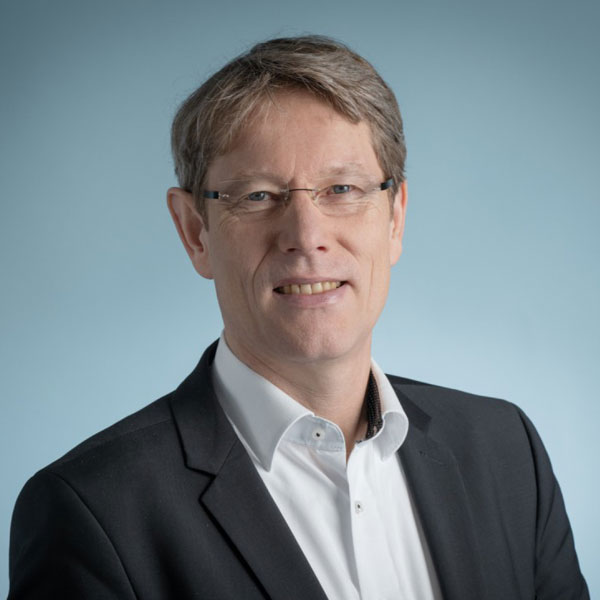
Bernhard Quendt
CTO, Thales Group
Bio :
Dr. Bernhard Quendt holds engineering degrees from the University of Stuttgart and Télécom Paris (ENST), and completed a PhD at the Technical University of Munich, where he was awarded the Rohde & Schwarz Prize.
Formerly Chief Technical Officer for Siemens Digital Industries, he joined the Siemens Communications division in 1999, before being appointed Vice President, R&D for Siemens Rail Automation in 2005. In 2011, he took charge of platform activities and R&D, as Vice President for Siemens Industrial Automation Systems, and, from 2015, held the position of Chief Technical Officer at Siemens Digital Industries.
Bernhard Quendt joined Thales in 2020 as Chief Technical Officer and Senior Vice President.
Abstract :
Thales is dedicated to build a future we can all trust : Citizens want privacy and trusted Identity, Governments want sovereign supply chains, Airline and Space Operators want long term availability ; all want frugal and energy efficient solutions.
Thales focus on technologies on which we can build upon for the long term and in particular Cybersecurity, Quantum and quantum-proof technologies, Trustable and understandable Artificial Intelligence, Open source Hardware and Software, Compound semiconductors and Advanced Packaging
Partnership is one of the key strategic levers to achieve this goal.
Jean-Philippe Fricker
Chief System Architect and Co-Founder, Cerebras Systems
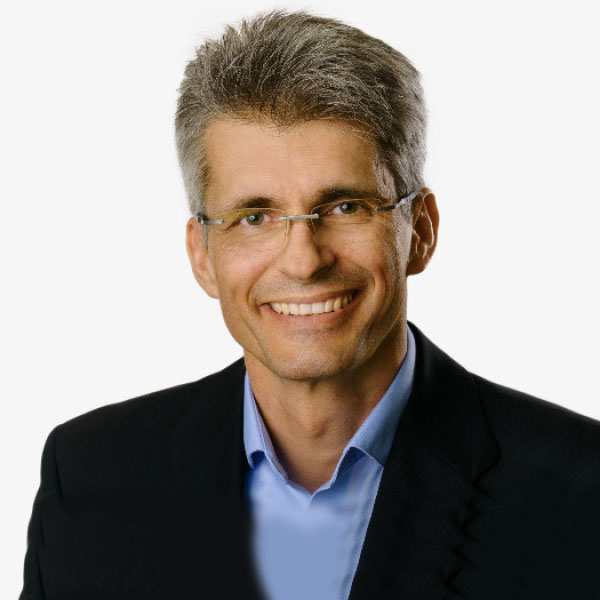
Jean-Philippe Fricker
Chief System Architect and Co-Founder, Cerebras Systems
Bio :
Jean-Philippe (J.P.) is Chief System Architect at Cerebras Systems. Before co-founding Cerebras, J.P. was Senior Hardware Architect at rack-scale flash array startup DSSD (acquired by EMC). Prior to DSSD, J.P. was Lead System Architect at SeaMicro where he designed three generations of fabric-based computer systems. Earlier in his career, J.P. was Director of Hardware Engineering at Alcatel-Lucent and Director of Hardware Engineering at Riverstone Networks. He holds an MS in Electrical Engineering from École Polytechnique Fédérale de Lausanne, Switzerland, and has authored 24 patents.
Abstract :
Cerebras Systems will present their cutting-edge AI hardware solutions designed to meet the growing demands of machine learning. This presentation will highlight the capabilities of the Cerebras Wafer-Scale Engine and its transformative impact on AI compute. J.P. Fricker, Cerebras Chief System Architect and Co-Founder, will discuss how Cerebras addressed key challenges across yield, lithography limitations, and thermal expansion. This session will also underscore Cerebras' success stories with prominent clients and their vision for scalable AI systems that make training the largest models fast and accessible.
David Anderson
President, NY CREATES
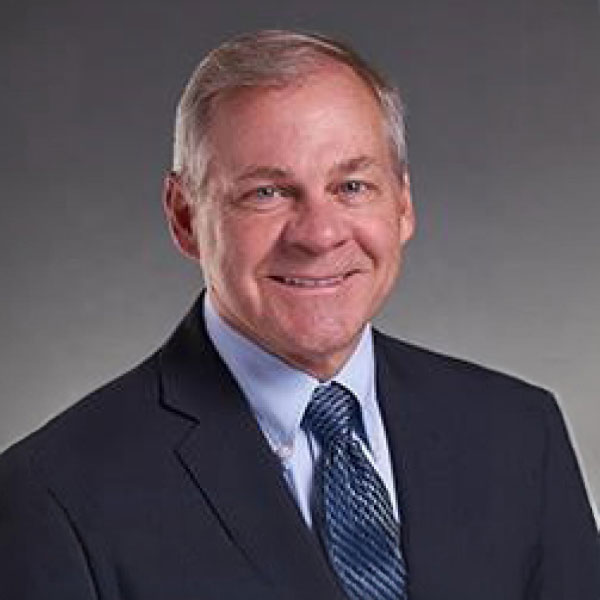
David Anderson
President, NY CREATES
Bio :
A semiconductor industry veteran of 35 years, NY CREATES President David Anderson provides strategic leadership to grow and achieve the organization’s mission of fostering innovation that leads to job creation in New York State. He oversees a program portfolio consisting of 10 sites throughout the state, with expenditures exceeding $350 million annually from industry and state partners, and federal government research and economic development programs.
Previously, David was President of SEMI Americas, leading SEMI’s programs and visibility in the Americas. Before that, he founded and was President and CEO of Novati Technologies, Inc., with the world’s largest portfolio of product development materials. He has held executive positions for development foundries ATDF and SVTC Technologies, and leadership positions at Fairchild Semiconductor, National Semiconductor, the Semiconducto Industry Suppliers Association, and SEMATECH.
David has extensive experience in technology development, process engineering, operations management, supply chain management, international marketing, government relations, and strategy.
Abstract :
This presentation details semiconductor R&D centers as key drivers for stimulating innovation and enhancing chip manufacturing capabilities while bolstering the global semiconductor industry. It will highlight the many unprecedented opportunities for accelerating semiconductor R&D and cultivating a robust ecosystem. Additionally, this presentation showcases the pivotal role of semiconductor R&D centers in harnessing collaborative research efforts, fostering public-private partnerships, and nurturing talent. It will highlight the positive impact of semiconductor R&D centers on industry growth, job creation, and national security. Attendees will gain insights into the innovative research initiatives, cross-sector collaborations, and technology roadmaps that these centers facilitate, and how CHIPS Acts will help to propel the innovations necessary for the future of the semiconductor industry.
Lia Li
CEO & Founder, Zero Point Motion

Lia Li
CEO & Founder, Zero Point Motion
Bio:
Dr. Ying Lia Li (Lia), CEO and Founder of Zero Point Motion, is a trailblazer in chip-scale optical inertial sensors. Recognized with the 2021 Institute of Physics Clifford Paterson Medal, the 2022 Innovate UK Women in Innovation Award and named as Sensors Converge ‘Woman of the Year’ 2023, Lia's groundbreaking work redefines sensing using light. A physics graduate from Imperial College, she earned her Ph.D. at University College London, developing optical sensors with applications in macroscopic quantum state preparation. With a track record of coupling optical resonances to mechanical motion, she achieved displacement sensing over 1000x smaller than a single atom. Post-Ph.D., she secured prestigious fellowships from EPSRC and the Royal Academy of Engineering before founding Zero Point Motion in 2020, raising over £6.3M to date.
Abstract:
Zero Point Motion has been developing optomechanical accelerometers and gyroscopes using standard MPW offerings in micro-electro-mechanical systems (MEMS) and photonic integrated circuit (PIC) platforms. By exploiting the coupling between mechanical motion and the evanescent field of optical resonators, exceptional inertial sensing noise floors are demonstrated. In this talk we present progress in our proof-of-concept devices and how we are tackling challenges on creating a compact and low cost system architecture. We are exploring a number of ways to integrate lasers and detectors, capitalizing on emerging capabilities such as heterogeneous solutions.
Sébastien Dauvé
CEO, CEA-Leti

Sébastien Dauvé
CEO, CEA-Leti
Bio:
Sébastien Dauvé was named CEO of CEA-Leti effective on July 1, 2021, after more than twenty years of experience in microelectronics technologies and their applications, including clean mobility, medicine of the future, cybersecurity, and power electronics.
Sébastien Dauvé started his career at the French Armament Electronics Center, where he worked on developing synthetic-aperture radar. In 2003, he joined CEA-Leti as an industrial transfer manager and supervised several joint research laboratories, in particular with the multinational Michelin.
In 2007, Sébastien Dauvé became a laboratory manager, then head of an R&D department in the area of sensors applied to the Internet of things and electric mobility. During this time, he supported the dissemination of new technologies in industry, including the automotive industry (Renault), aeronautics, national defense (SAFRAN), and microchips with the industry leader Intel. He played an active role in the creation of start-ups in application fields ranging from health to infrastructure security, leading to dozens of new jobs. In 2016, he became Director of the CEA-Leti Systems Division.
From sensors to wireless communication, Sébastien Dauvé has played an active role in the digital transformation, focused on coupling energy frugality and performance. He has made cross-disciplinary approaches central to innovation by harnessing the expertise of talented teams with diverse backgrounds. Their goal is to provide technological tools for meeting the major societal challenges of the future.
Sébastien Dauvé is a graduate of the French Ecole Polytechnique and the National Higher French Institute of Aeronautics and Space (ISAE-SUPAERO).
Uygar Avci
Director, Novel Devices and Memory in Foundry Technology Research, Intel
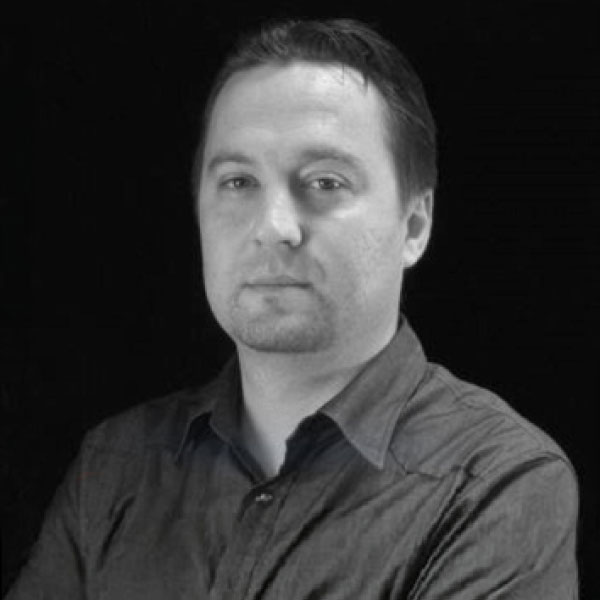
Uygar Avci
Director, Novel Devices and Memory in Foundry Technology Research, Intel
Bio:
Uygar Avci is a Senior Principal Engineer at Intel Corporation and is currently leading Novel Devices and Memory Group in Foundry Technology Research. He is responsible for delivering new transistor and memory devices by bridging Physics-based understanding of new materials and experimental realities to enable viable semiconductor devices with power, performance and scaling benefit. He was an Editor for the IEEE Transactions on Electron Devices and is currently in the Executive Committee of the IEDM Conference. He has over 100 patents and has co-authored more than fifty papers. Uygar received double-major degrees in Physics and Electrical Engineering in Turkey and his PhD degree in Applied Physics from Cornell University.
Stephen Bart
Senior Director of Advanced Technology, TDK
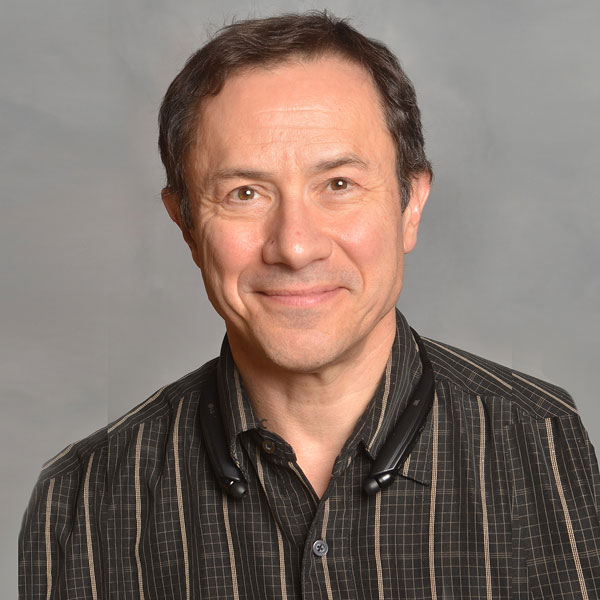
Stephen Bart
Senior Director of Advanced Technology, TDK
Bio:
Dr. Bart received the B.S., M.S., and Ph.D. degrees from the Massachusetts Institute of Technology, Cambridge, Massachusetts. He did his doctoral research with Professors Senturia and Lang on analysis and design of the first microfabricated electrostatic motors and pumps. After his PhD work, Dr. Bart joined Analog Devices, Inc., where he designed the MEMS sensor in the well-known Analog Devices, Inc. ADXL150 family of airbag accelerometers, which has over 500 million sensors in the field. From 1996 to 2002 he held several positions at Coventor, Inc., a developer of physical design tools for MEMS systems. Dr. Bart returned to Analog Devices as a Senior Product Development Leader, working on inertial MEMS sensors for the commercial marketplace. Dr. Bart then joined MKS Instruments to develop high-performance, vacuum absolute-pressure sensors for semiconductor and industrial applications. Today, Dr. Bart leads the Advanced Technology group at TDK, where he is developing advanced gas sensors, ultrasonic and acoustic sensors and advanced machine learning and circuit architectures. Dr. Bart's research interests include the design, modeling, and simulation of complex electromechanical systems and Machine Learning methods for sensor data fusion. Dr. Bart holds 11 patents in the microsystems area.
Abstract:
Sensor technology is becoming increasingly sophisticated, affordable, and ubiquitous. Sensors are becoming the human interface to the digital world and, when combined with machine learning (ML), make systems or devices more aware of what the human is doing, about to do, or has just done. As the variety and capabilities of sensors grow, technology has the opportunity to disappear into the background, assisting everyone to be better connected, track their internal health and well being and their external environment, and be enabled with more leisure time. Finally, sensors can optimize the power we consume with all devices, delivering a great experience at the lowest consumption of resources. I will explore these themes, show examples of developments at TDK, and inspire a future vision of smarter sensors.
Christina Strohrmann
Director Advanced Engineering, Bosch Sensortec GmbH
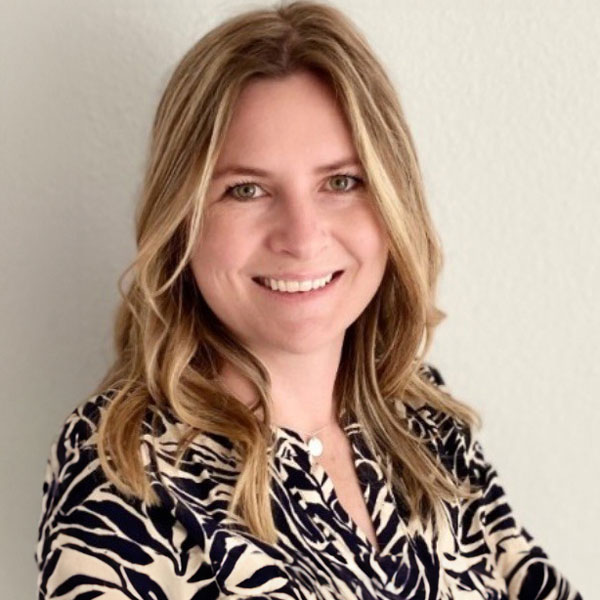
Christina Strohrmann
Director Advanced Engineering, Bosch Sensortec GmbH
Bio :
Dr. Christina Strohrmann holds a PhD in Electrical Engineering from ETH Zurich, Switzerland, and an MSc in Information Technology from the University of Kaiserslautern, Germany. She joined Bosch Sensortec GmbH in 2013 and since then works in R&D for sensors in consumer electronics, namely smartphones, wearables, and hearables. She heads the department for advanced engineering, responsible for product pre-development, system architecture, technology and IP Management.
Abstract :
In 2006, Bosch Sensortec released the world's smallest barometric pressure sensor. Since then, we have expanded our portfolio of environmental sensors by humidity sensors, gas sensors, media-robust sensors, and lately particle sensors. All targeting to improve our daily lives and designed for handheld, battery-powered devices. This presentation will provide an overview on applications, use cases, and technologies.
Séverine Cheramy
Product Line Manager, Aledia

Séverine Cheramy
Product Line Manager, Aledia
Bio:
Séverine Chéramy holds an engineering degree having specialized in material science.
She has spent over eight years at GEMALTO, a leading smart-card company developing technologies for secure solutions such as contactless smart cards & electronic passports.
In 2008, she joined CEA-Leti and for 11 years occupied various roles related to semiconductor 3D integration, as project and team leader,.In January 2017, she took the responsibility for 3D integration strategy and related business development. She was also director of the 3D project of ITR (Institute of Technological Research) Nanoelec from 2012 to 2020.
In 2021, she joined ALEDIA, spin-off of CEA-Leti, as product line manager for Smart-Pixel line. She coordinates the products life from specification to commercialization and manages the roadmap , matching customers’ needs and production’s requirements.
Abstract :
Aledia has developed a unique GaN-on-Silicon 3D µLED technology enabling the use of standard large-area silicon wafers. This cost-effective technology combines the interest of high manufacturability together with easy integration of electronics, and therefore enables access to completely new display formats based on µLEDs.
The talk will focus on heterogeneous integrations developped at Aledia which combine the emission function and the CMOS driver.
Kazuaki Deguchi
Senior Manager RF Device Division, Murata
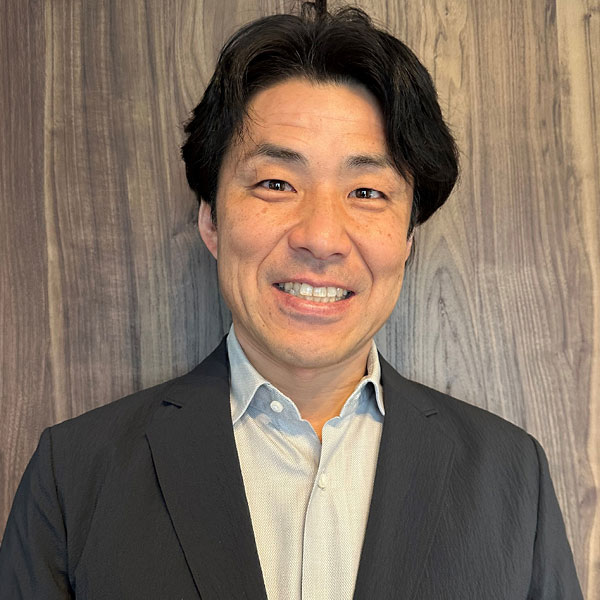
Kazuaki Deguchi
Senior Manager RF Device Division, Murata
Bio :
Kazuaki Deguchi received the B.S. and M.S. degrees in electronics, information systems and energy engineering from Osaka University, Suita, Japan, in 2000 and 2002, respectively. From 2002 to 2014, he joined Renesas Electronics Corporation, Hyogo, Japan and engaged in research and development of analog and mixed-signal circuits. From 2012 to 213, he joined IMEC Leuven, Belgium as an expatriate to research high-precision ADC. From 2014, he has been working with Murata Manufacturing Co, Ltd., Kyoto, Japan. He initially engaged in Wi-Fi module design and since 2018 he has been working for RF device development. His recent research interests include the high-linearity and high-efficiency power amplifier design for RF front-end.
Abstract :
In the realm of RF Front-End products, there has been a historical emphasis on high data rates. However, real-world products have demonstrated a growing need for tailored solutions that align with specific use cases. This presentation will shed light on this paradigm shift and explore how RF Front-End Modules are evolving to meet application-specific requirements. We will delve into the world of RF Front-End Modules with a specific focus on three key aspects: economical, low power consumption, and user-friendliness RF Front-End Module solutions.
A three-day event
Program
#LetiDays
Welcome Coffee, Exhibition & Networking
Lunch, Exhibition & Networking
- Live Demos & Partners' Corner: See technology demonstrations and prototypes, and network with potential technology providers and partners.
- Startups Corner: Meet some of the most innovative startups in the industry all in one place.
- Business Meetings: Pre-scheduled meetings to make sure you talk to everyone you wanted to meet at this fast-paced event.
Welcome Coffee, Exhibition & Networking
Satellite Conferences: Morning Sessions
Lunch, Exhibition & Networking
- Live Demos & Partners' Corner: See technology demonstrations and prototypes, and network with potential technology providers and partners.
- Startups Corner: Meet some of the most innovative startups in the industry all in one place.
- Business Meetings: Pre-scheduled meetings to make sure you talk to everyone you wanted to meet at this fast-paced event.
Welcome Coffee, Exhibition & Networking
Satellite Conferences: Morning Sessions
Lunch, Exhibition & Networking
- Live Demos & Partners' Corner: See technology demonstrations and prototypes, and network with potential technology providers and partners.
- Startups Corner: Meet some of the most innovative startups in the industry all in one place.
- Business Meetings: Pre-scheduled meetings to make sure you talk to everyone you wanted to meet at this fast-paced event.
An event designed
to bring you maximum value
Live demos
See product technology demonstrations and prototypes, and network with potential technology providers and partners. The best way to get a handle on what’s next in technology.
Startups corner
Meet some of the most innovative startups in the industry all in one place and see live demos. Could your next technology provider be among them? You won’t know if you don’t register!
Business meetings
Pre-scheduled meetings to make sure you talk to everyone you wanted to meet at this fast-paced event. Don’t go home frustrated by all the people you didn’t get to talk to!
Evening reception
These exclusive events are valuable opportunities to expand your network and deepen your relationships with industry influencers. Register today to secure your place.
The latest Leti Innovation Days news
VIDEO
Leti Innovation Days 2024: Relive the best moments
Leti Innovation Days was back in 2024, with more than 1,100 people attending. Did you miss the event? Relive the highlights in video while you wait for the event to kick off!

